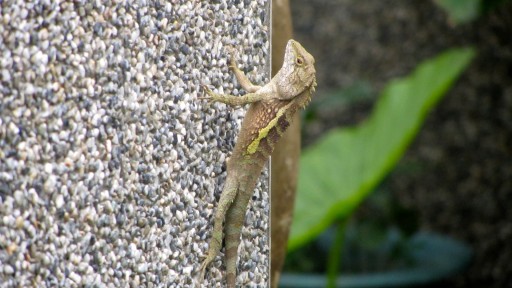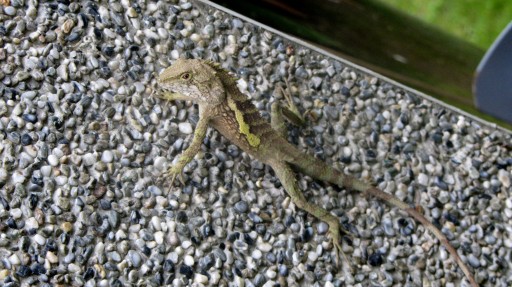Swinhoe’s Japalura
It is always a pleasure to learn that a species of animal frequenting your backyard is a unique one, not found anywhere else in the world. Swinhoe’s japalura (Japalura swinhonis) is a species of lizard endemic to the island of Taiwan. And what a stunning animal it is! It’s mane scales give an impression that it wouldn’t be out of place in a jurassic park and although it is certainly no dinosaur, this particular species is reportedly the largest of all japaluras, reaching up to 28 centimetres. It can also adapt to the environment by changing its body colour. As is often the case in the nature, the male is more beautiful than the female, clearly distinguishable by a yellow stripe that graces the two sides of its otherwise brown body.
Besides being an attractive lizard to look at, the animal’s behaviour is also very interesting to observe. The Swinhoe’s japalura is well adapted to life around human habitations and, unlike most other lizard species, this particular one does not flee at a first sight of a human being. On the contrary, it often seems to be intrigued by the presence of a large mammal as it curiously observes the intruder by shifting its triangular head and moving its large eye balls. There were even some cases when the lizard allowed me to briefly touch its skin, before eventually escaping to safety. And it can run surprisingly fast on most surfaces. It can also show signs of aggression by enlarging its throat bag and, rather comically, performing an action resembling push-ups.
The photos below, taken over several years in and around Taitung, give an indication about the impressive versatility of the Swinhoe’s japalura. Whether on dry leaves, vertical walls, tree branches or even washing lines(!), this stunning lizard can run, jump, change colours and generally entertain any inquisitive observer.
(This page has been viewed 666 times.)





I noticed there has not been a post since 2016, so this may be a long shot. I was wondering if you know what these eat? I am guessing they’re insectivores, however, I heard from a local science teacher that they also eat fruit.
I’ve observed them eating insects, but not fruit.
I remember a time when a flying bulbul accidentally dropped a large insect on the grass; this was spotted by a male japalura who appeared from nowhere and immediately rushed to claim the unexpected lunch. The bulbul too attempted to recover the prey, but the lizard was faster and more assertive.
Sometime we throw some organic matter, including old fruits, into our backyard. These japaluras often hang around these places, because the decaying fruit attracts flies and other insects. I’ve observed them eating the flies, but not the fruit. That’s not to say that they never eat fruit – I’ve just not seen them doing so.
I am in Taiwan for the first time and this morning I encountered this species of lizard. It seemed to be making a chirping noise. I don’t know for sure if this came from the lizard or an unseen frog very close to the lizard. Have you heard it sing?